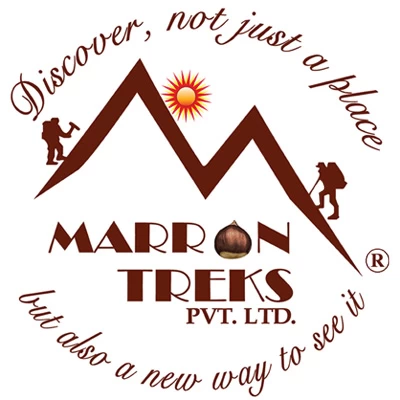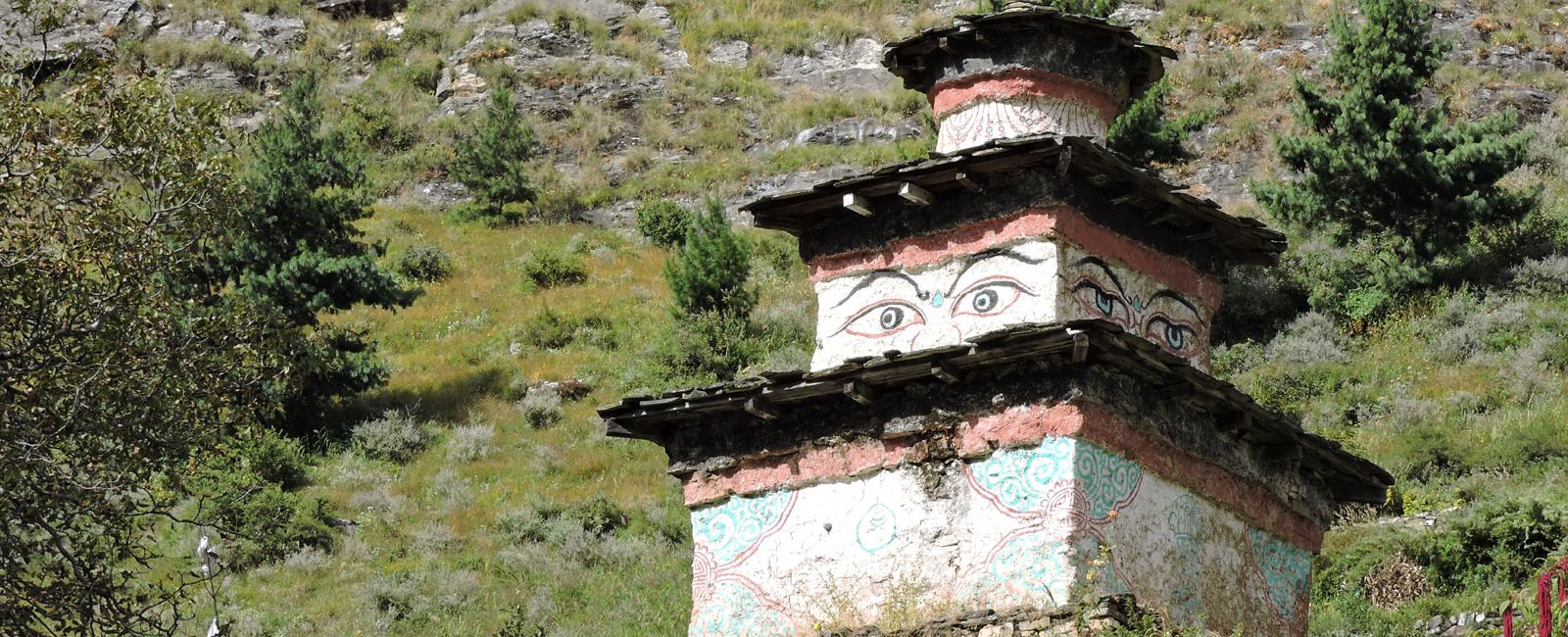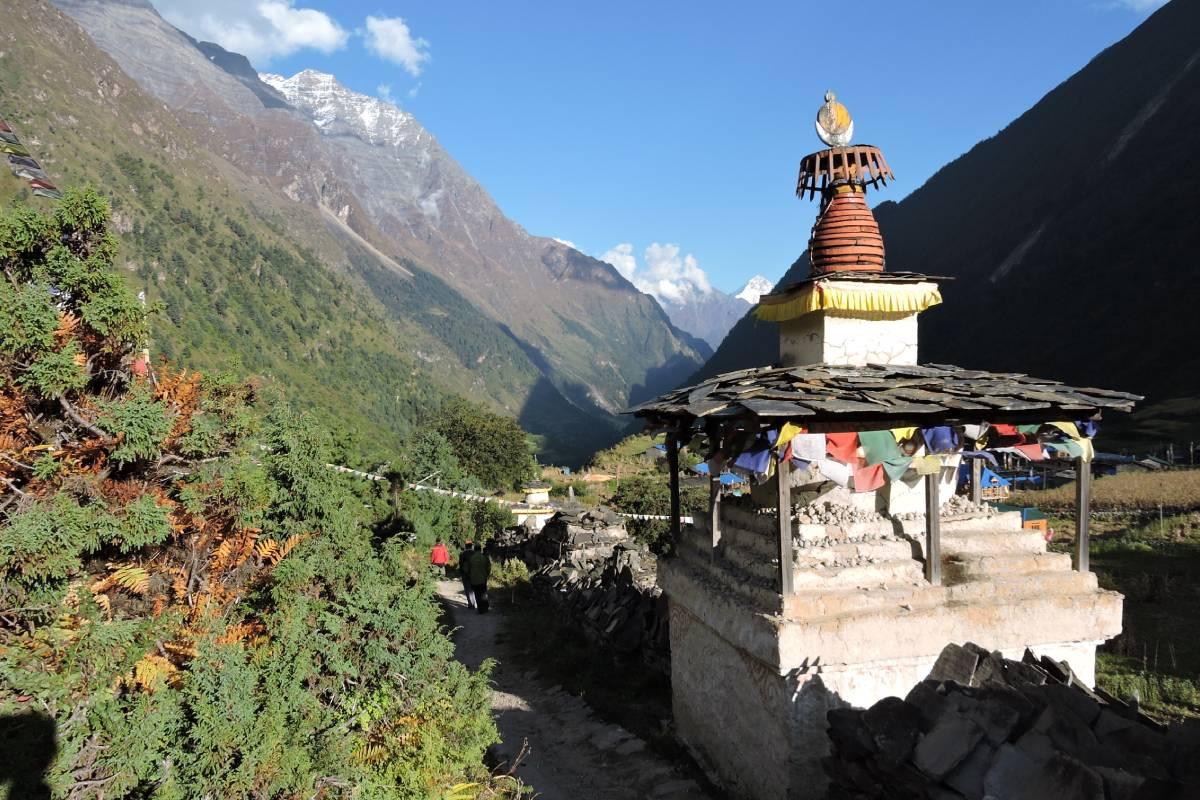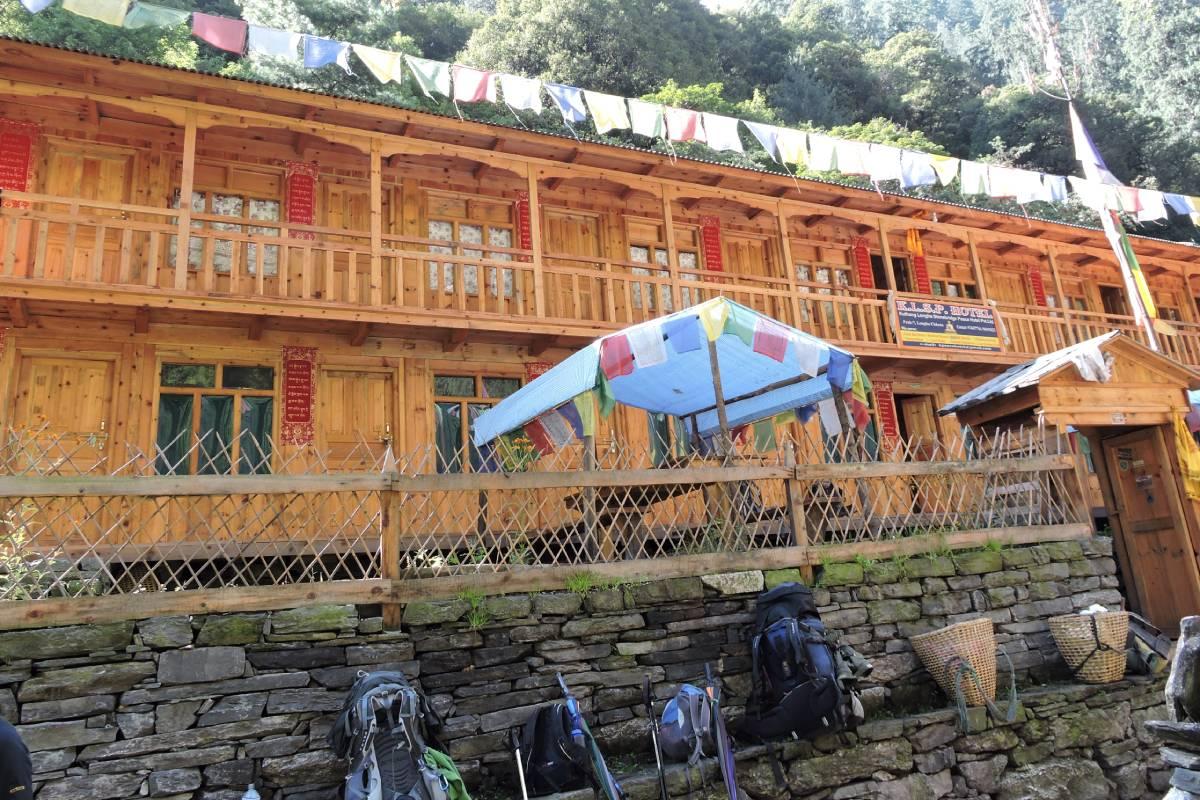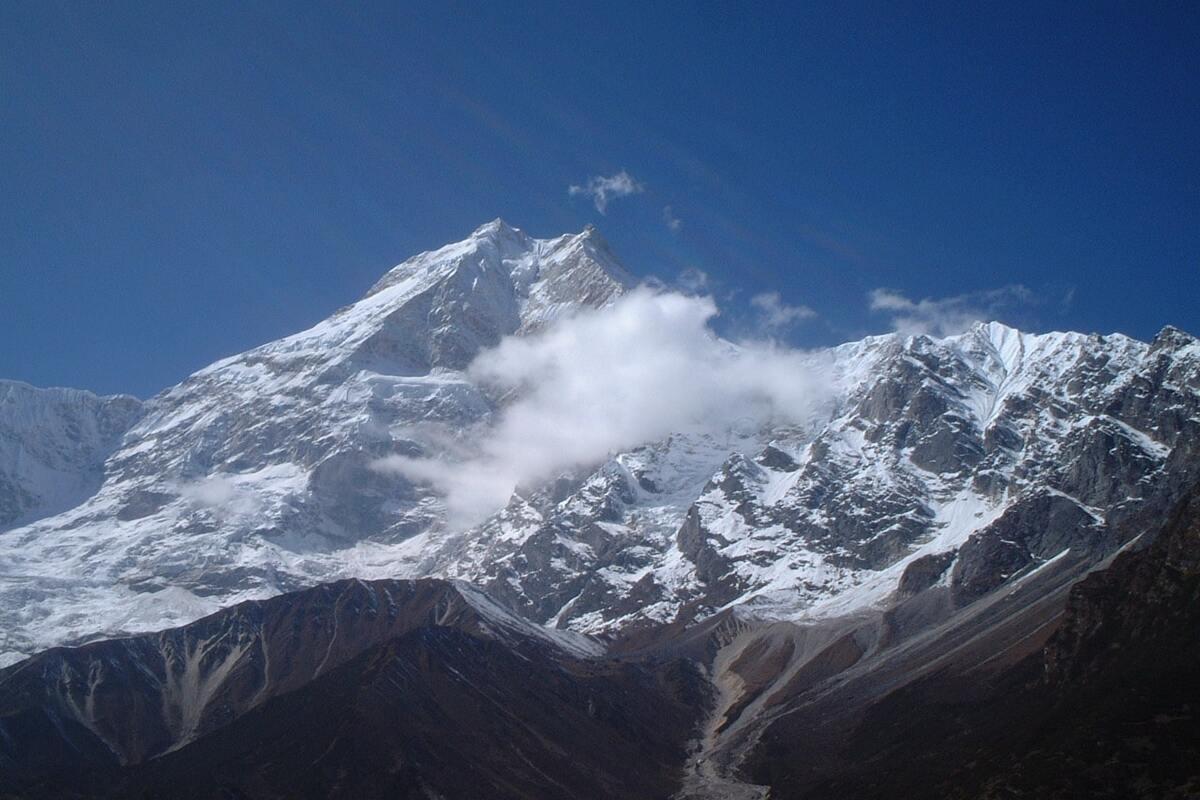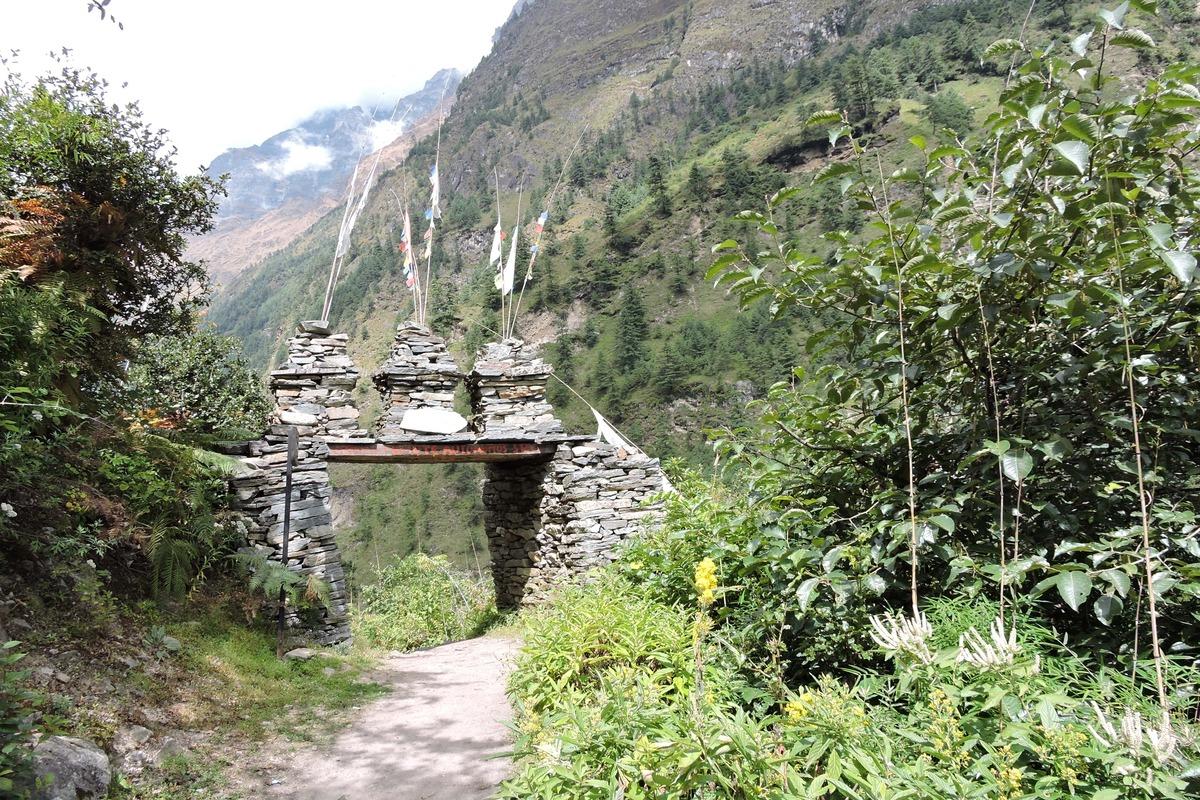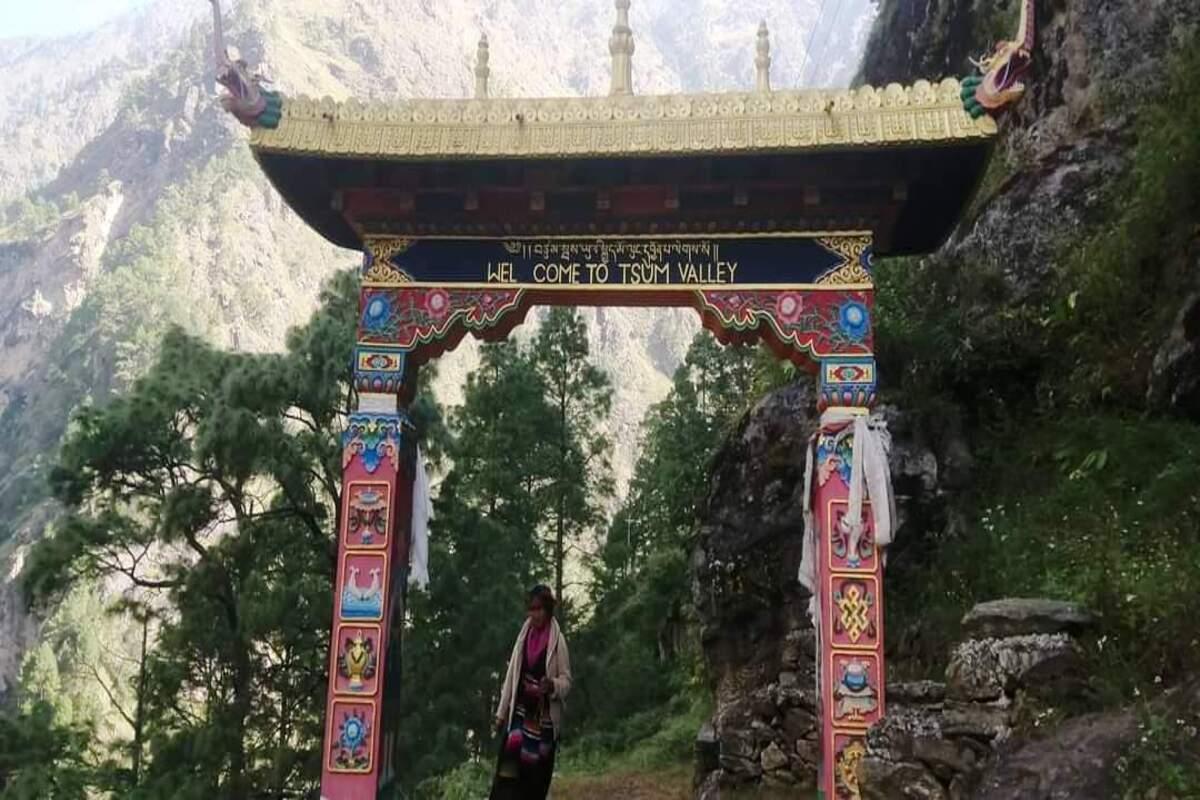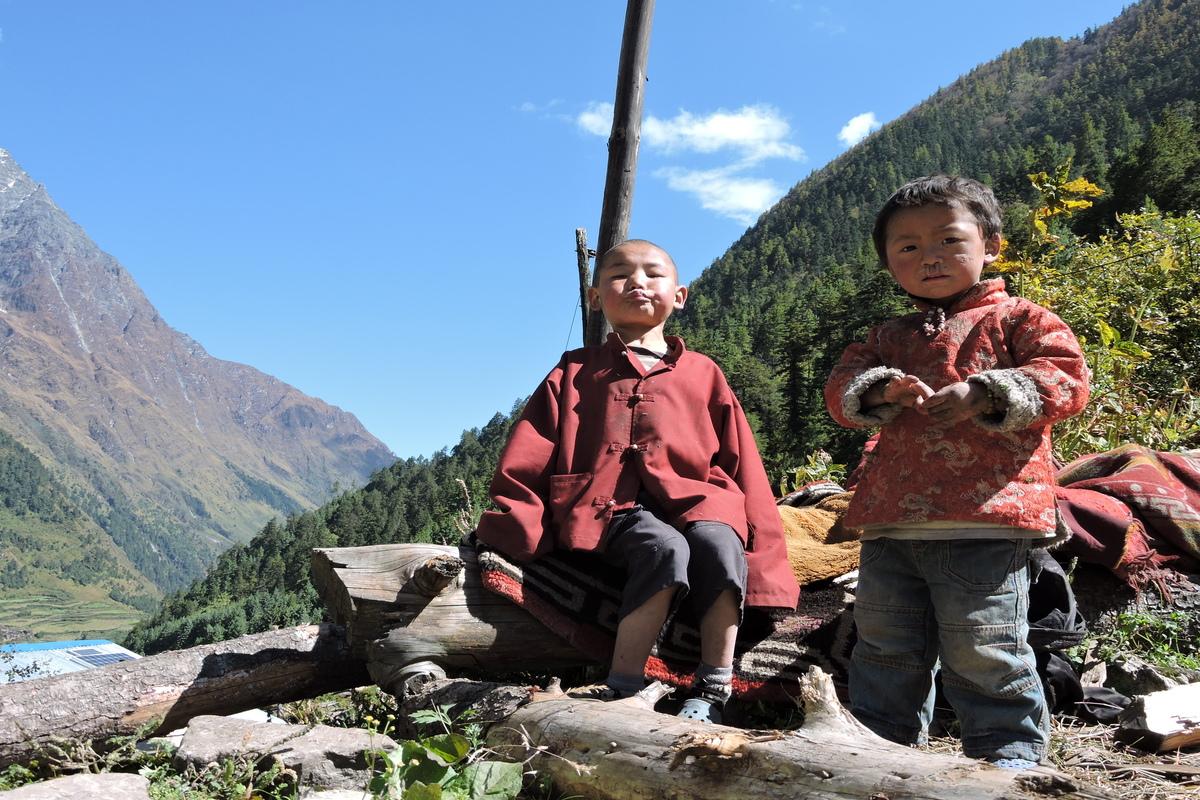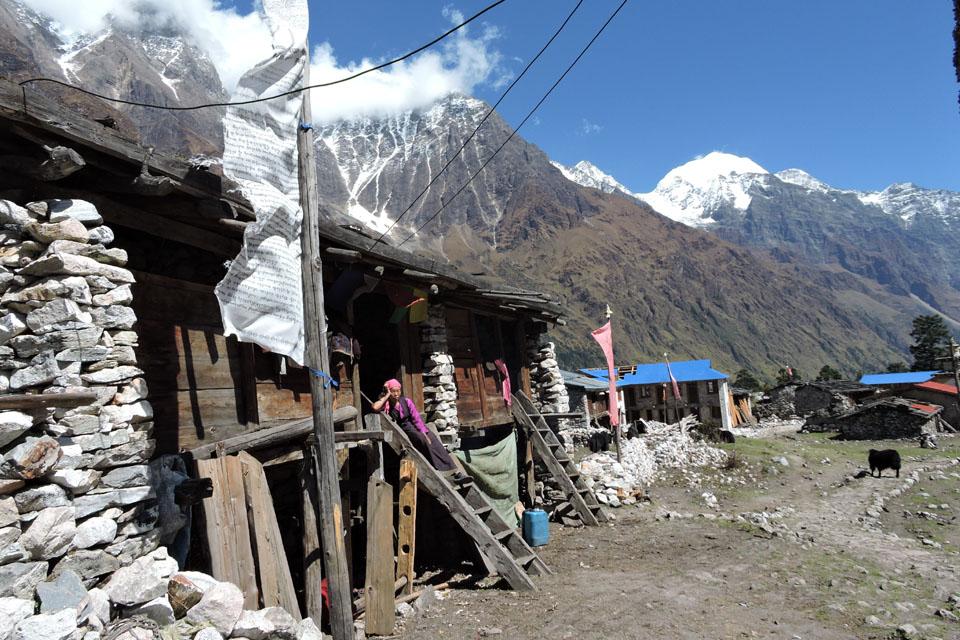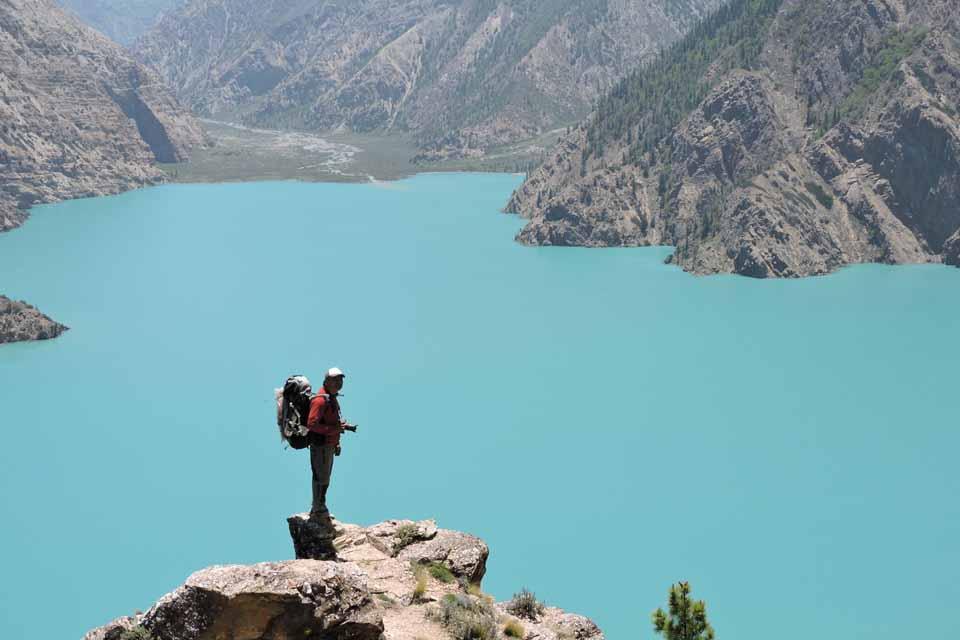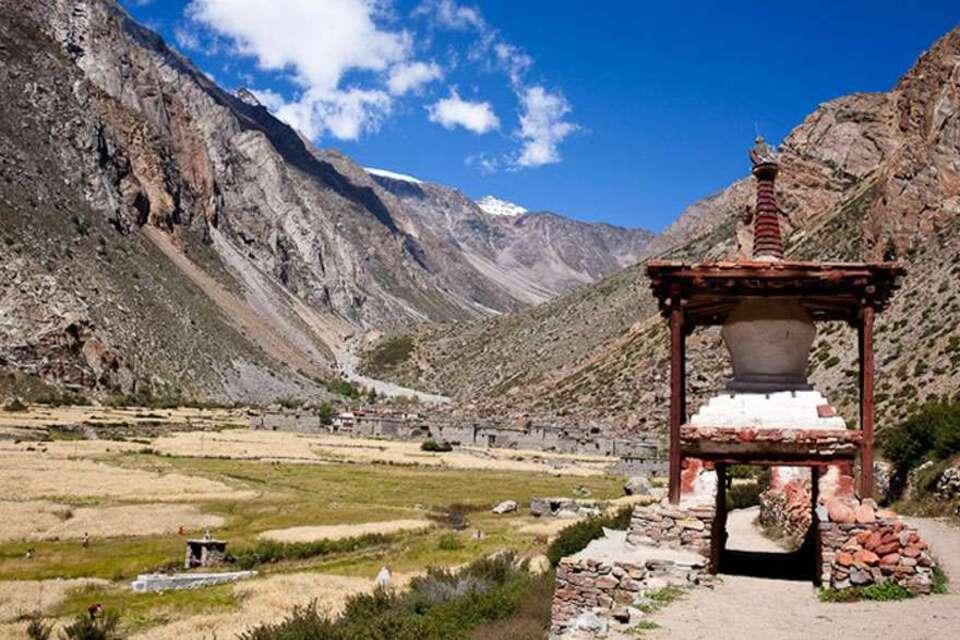Tsum Valley Trek
Trip at a Glance
Tsum Valley trek is another popular trek route in Manaslu region located in the northern Gorkha district of Nepal. The region of Tsum Valley is a remote and relatively untouched location offering a unique cultural and natural experience.
Trekking the Tsum Valley provides stunning landscapes, towering mountains, and rich Tibetan Buddhist culture. The trekking trail passes through traditional mountain villages, ancient monasteries, and terraced fields where one can immerse themselves in the traditional lifestyle of the local people and their culture mainly influenced by Tibetan Buddhism. This trek offers majestic views of the Himalayas like Ganesh Himal, Sringi Himal, and Boudha Himal.
Trekking to Tsum Valley was restricted not long ago until 2008 where Rachen and Mu Gompas are two most important monasteries in the valley. Tsum Valley is rich in biodiversity with green forests, roaring rivers and ancient cave which makes the region a worth visiting trekking destination.
Trek to Tsum starts from Machha Khola after a scenic drive from Kathmandu. You will then have to follow the Budhi Gandaki River, passing through various villages like Philim, Chumling, and Chhekampar. Along the way, you will have breathtaking views of several prominent peaks, including Ganesh Himal, Manaslu, and Himalchuli.
The prime highlight of the trek is Mu Gompa, the oldest and most important monastery of Tsum. It is the largest monastery of the valley and a spiritual center for the local people which houses many ancient artifacts and Buddhist scriptures.
Tsum Valley Trek is to explore the hidden gem of the Himalayas and immerse yourself in the rich culture and natural beauty of this remote region in Nepal.
Tsum Valley Trek Highlights
- Enjoy Kathmandu Machha Khola drive passing along small towns, rivers& scenic landscapes.
- Witness the splendid mountainous vista of Mt. Ganesh (7429m) from Upper Tsum.
- Explore exotic places like Mu Gompa, Rachen Gompa, Milarepa cave etc.
- Hike past waterfalls, rivers, and caves along the way.
- Observe Wildlife like blue sheep & Himalayan tahr along the trek route.
- Beautiful pine, juniper, and rhododendron forests.
- Discover the Tibetan and Buddhist lifestyle, culture, art, religion and many more.
Itinerary
Day 01: Arrival in Kathmandu (1400m)
Day 02: Drive from Kathmandu to Machha Khola (869m) via Soti Khola ((700m/9-10 hrs)
Day 03: Trek from Machha Khola to Jagat (1,300m/6-7 hrs)
Day 04: Trek from Jagat to Lokpa (2,240m/5-6 hrs)
Day 05: Trek from Lokpa to Chumling (2,386m/6-7 hrs)
Day 06: Trek from Chumling to Chhokhang paro (3,031m/4-5 hrs)
Day 07: Trek from Chokhung paro to Nile (3,361m/5-6 hrs)
Day 08: Trek from Nile to Mu Gompa (3,700/5-6 hrs)
Day 09: Trek from Mu Gompa to Rachen Gompa (3240m/5-6 hrs)
Day 10: Trek from Rachen Gompa to Chumling (2,386m/6-7 hrs)
Day 11: Trek from Chumling to Lokpa (2,240m/5-6 hrs)
Day 12: Trek from Lokpa to Jagat (1,300m/6-7 hrs)
Day 13: Trek from Jagat to Machha Khola (869m/6-7 hrs)
Day 14: Drive from Machha Khola to Kathmandu (1400m/8-9 hrs)
Day 15: Final departure
Upon arrival at the Tribhuwan International Airport in Kathmandu, you will be received by a representative from Marron Treks and transferred to your designated hotel. Welcome drinks will be served at the hotel and after that we have a quick pre-trip meeting to discuss on the necessary formalities and the trekking itineraries. You may then check into your room and freshen up. In the evening, you can stroll around the vicinity of your hotel to get a superficial glimpse of this great city.
We have to go through Arughat and Soti Khola on our way to Machha Khola today. The nine-hour drive offers a variety of scenery, including rivers, hills, villages, and rice farm settings. The Machh Khola is located in Mid-West Nepal's Gorkha district. As one travels into warmer climates, they pass by numerous farming communities and cities along the Trisuli and Budi Gandakii rivers. Spend the night in a nearby guest home overlooking a stunning valley.
Today’s trail follows the course of the Buri Gandaki River. The route necessitates us to traverse up and down the ridges. Eventually the river valley widens and then we proceed for a pleasant walk along the easy trail to Jagat (1300m), a compact village with a beautiful flagstone square.
Begin your trek from Jagat early in the morning with crossing the suspension bridge over the Budi Gandaki River and follow the trail through terraced fields. The trail initially climbs through a forested area before descending slightly to the village of Sirdibas. Continue ascending from Sirdibas to the larger village of Philim, known for its traditional Tibetan-style houses and vibrant community. From Philim, the trail continues through dense forests and along the riverbanks to Lokpa. Lokpa is a serene village with a few lodges and guesthouses. It is a peaceful spot to rest and acclimatize.
The trail is primarily a rise, making it a challenging day due to the increasing altitude. Along the trek, the expansive views of the Himalayas continually reveal and reveal themselves. We stroll through the charming Lungwa Khola settlements before climbing up through pine forests to reach Gumlung. We eventually arrive in Chumling, the lower Tsum valley, which is well-known for Chumling Gompa and its stone-paved streets, after crossing the Siyar Khola.
Today's walk begins with a crossing of the suspension bridge. We stroll up the opposite path, taking in the sights of Ganesh Himal as we head toward Rainjam and Serpu Khola. We continue across the bridge and move toward the village of Gho. After two more hours of walking, we finally arrive at Chokhangparo by walking to the upper Tsum valley.
The altitude is rising sharply today, and the trail is also climbing. We stroll past the suspension bridge that crosses Lamagaon and head toward Nunnery Gompa, also called Rachen Gompa. We visit the Gompa and then head back down the route. Before arriving at the Nile, we travel via several Buddhist temples and the villages of Shiar Khola, Lar, Phurbe, and Pangdun. We also cross the last bridge. When you've rested at the Nile, you can visit the monastery at Chule, which is close by.
You are much closer to the Tibetan border after today's hike. The path gradually ascends along the valley's western bank, passing through landscapes that increasingly resemble the Tibetan plateau – arid, wide-open spaces with prayer flags fluttering in the wind. You'll finally arrive at Mu Gompa, the highest point of the trek and the largest monastery in the Tsum Valley. The age-old monastery of Mu Gompa is home to several holy texts, scriptures, and antiques.
Today, you begin your descent from the highest point of the trek. The trail gradually descends, witnessing the stunning mountain views as you lose altitude. Afterwards, you'll arrive at Rachen Gompa (also known as Nunnery Gompa) where you can spend more time exploring this significant nunnery, observing the daily life and spiritual practices of the nuns.
Begin your descent from Rachen Gompa. The trail will generally be downhill, making the walking less strenuous. You'll pass through several small settlements and past Buddhist mani walls and chortens. You will notice the vegetation becoming denser and greener again as you lose significant altitude. Reach Chumling, a beautiful village known for the Chumling Gompa and its distinctive stone-paved alleys.
Today you'll largely retrace the path you took earlier. The trail will involve a continuous descent through the forested areas and along the Siyar Khola. Arrive in Lokpa, the gateway village to the Tsum Valley and a small, peaceful settlement.
The path goes downhill, winding through dense forests and along the banks of the Budhi Gandaki River. Cross Philim, where the trail continues its descent. The landscape will transition from dense forest to more open areas with terraced fields as you approach lower elevations. Arrive in Jagat which serves as a checkpoint at the entry/exit point of the restricted Manaslu region.
Begin your trek from Jagat, heading south along the familiar trail that follows the Budhi Gandaki River. The trail continues its steady descent, leading you closer to Machha Khola. When you reach Machha Khola, the trek officially comes to an end.
Depart from Machha Khola early in the morning to ensure you have ample time for the long drive back to Kathmandu. Arrive in Kathmandu in the late afternoon or early evening then check into your hotel, relax, and refresh after the long journey.
Today is your final day in Nepal. A representative of Marron Treks will escort you to the Tribhuwan International Airport, three hours to your flight schedule. As we reluctantly wave goodbye to each other, let’s make a wish to stumble upon one another very soon. Have a safe flight back home and we look forward to being your travel companion in Nepal again.
What is included?
- Airport pick-up and drop services.
- Hotel accommodations in Kathmandu on Twin-Share Basis with breakfast.
- Kathmandu/Machha Khola/Kathmandu transfers by a private vehicle.
- All trekking accommodations with Breakfast/Lunch/Dinner at local lodges.
- A comprehensive medical kit (will be carried by the trekking guide).
- Experienced Government licensed English Speaking Guide & Porter (1 porter for two people) including their food, accommodation, salary & insurance.
- Tsum Valley special permit & TIMS (Trekkers' Information Management System).
- Manaslu conservation area permit.
- Four seasonal sleeping bags (to be returned after trip completion) & Marron Treks duffel bags.
- Farewell dinner with a live Nepalese cultural program.
- All government and local taxes.
What is not included?
- International airfare.
- Nepal entry visa fee – Visa can be obtained upon your arrival at the Tribhuwan International Airport in Kathmandu. (USD30 for 15 days)
- Lunch & dinner in Kathmandu.
- Personal travel insurance.
- Emergency rescue evacuation (to be covered by the client's travel insurance).
- Other expenses of a personal nature (phone calls, laundry, battery recharge, bottle or boiled water, hot shower etc.)
- Cost incurred due to the addition of extra days or change in the itinerary due to bad weather, political turmoil or any other unforeseen contingencies.
- Bar bills, alcoholic drinks & beverages.
- Tips to guide & porters (Tipping is expected).
Route Map
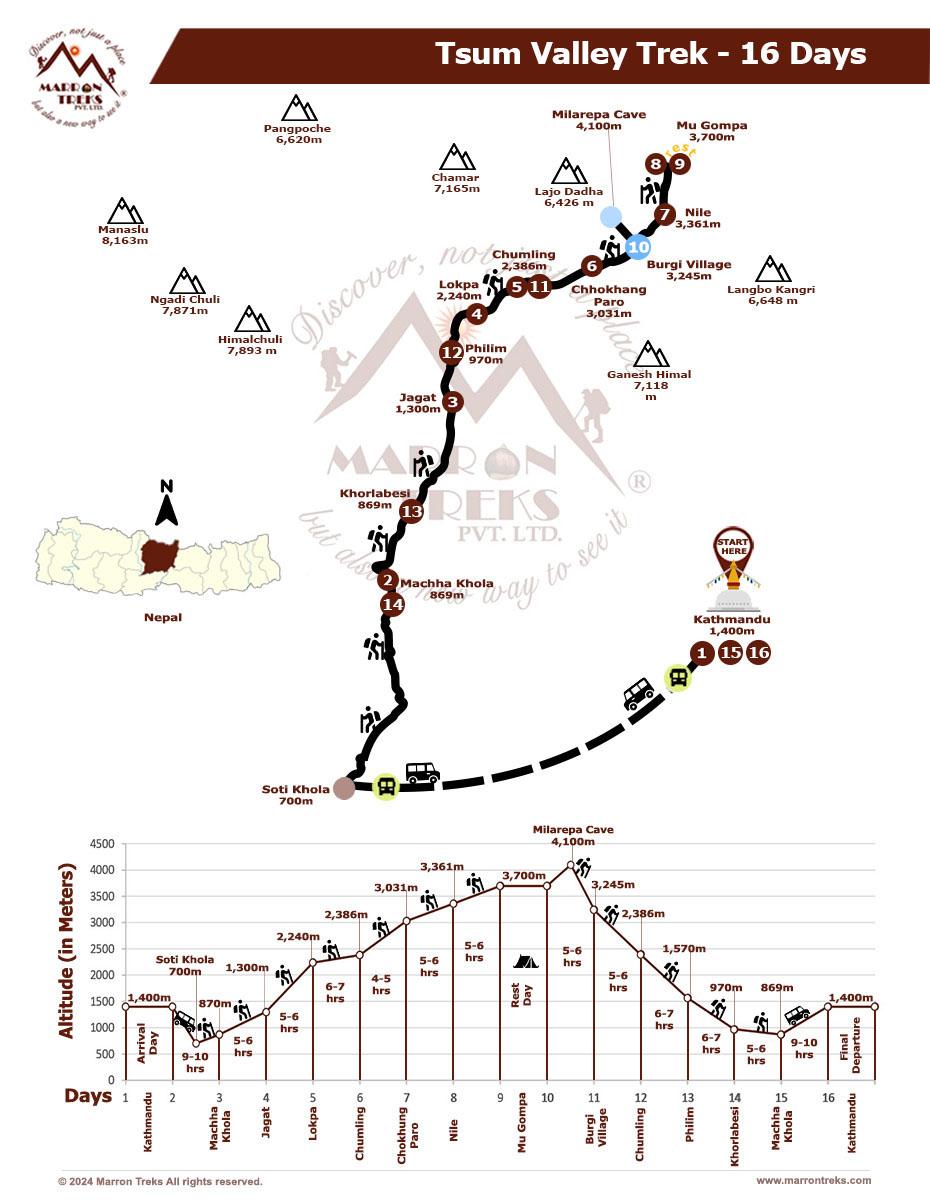
Trip Info
Accommodation
While you are in Kathmandu, we opt to accommodate you in 4- or 5-star hotels like Hotel Royal Singhi (4-star), Hotel Manaslu (4-star), Radisson (5-star), Yak & Yeti (5-star), or similar. During the trek, you will be accommodated in a local mountain lodge, better known as Tea House. These lodges and teahouses provide good services and are equipped with basic amenities. We will endeavor to provide you with the best accommodation available along the route so that you get a good night’s rest in a hygienic milieu.
Meals
We never compromise the quality of food or the health of the trekkers as well as the crew members. Generally, we opt for the fresh and nutritional local community food available. You could make your delicious pick from an array of traditional foods like Sweet potatoes, buckwheat barley, etc. This way, you could not only get a real sense of the local culture and life patterns but also contribute to promoting the locally available resources of organic food and beverages. Besides, a wide range of Continental, Chinese, Italian and Indian cuisines like Pizza, Spaghetti, French Fries, Soups, Breads, Masala curry, etc. are also available in the restaurants for your retreat.
Acclimatization
Altitude sickness is a serious risk while trekking in the Himalayas. It's important to acclimatize properly by spending a few days at lower altitudes before heading higher. By spending time at lower altitudes before pushing higher, your body has time to adjust. Our trekking packages have enough acclimatization days planned where you'll be spending a day or two at lower altitudes, allowing your body to adjust to the increasing altitude.
Electricity & drinking water
For an additional cost, you can use the electricity in all tea houses and lodges to recharge your batteries. The lodges have packaged mineral water for sale, or you can fill your bottle with boiling water. To make water drinkable, you can use water purification tablets too. But, due to hygienic issues, you should avoid drinking water from taps, rivers, or wells in trekking areas.
Communication
At lodges, restaurants, and hotels, Wi-Fi is available for an additional fee in the most popular trek regions, like Everest, and Annapurna. However, at high elevations, phone calls are the only means of connection. Our office in Kathmandu is in constant communication with your trek guide. In Kathmandu, you can purchase a local sim card for communication purposes. At high elevations, the mobile signal might not be as strong, though.
Luggage
Our porters are paired with one trekker for every two hikers, and one porter can safely carry 30 kg maximum weight. Therefore, we advise you to fill your duffle bag not more than 15 kg with your belongings. You may carry a small backpack with your valuables and informational documents. The things you are not taking along on the trek can be stored in a hotel in Kathmandu free of cost.
Typical Trek Day
Mostly your trek day starts with breakfast at 7-8 am, followed by a 3-4 hour morning trek. Lunch break is around an hour, then you continue trekking to your destination for the day. After reaching the teahouse lodge, you can relax, explore nearby areas, and enjoy dinner at 6-7 pm. Evenings involve socializing, a trek briefing, and leisure activities before bed.
Travel Insurance
It is advised that you arrange your travel insurance before leaving your homeland. The main thing is to make sure that your insurance covers you for both- medical and evacuation costs. Having travel insurance with you makes your trip secure and hassle-free.
Our Guides
Guides play a significant role during the trek. They are the ones who literally decipher the trekking codes for you so that you can actually connect with nature, culture and people along the way. We have helpful and dedicated trekking guides who are very well-versed in the culture, life patterns and every single detail pertaining to the trek region you are traveling in. Thus, in the company of our professional Sherpa guides, your trek becomes not only entertaining but also equally informative.
Porter and Staff Care
When it comes to high-altitude trekking, porters and staff members make up a pivot. Marron Treks ensures that all the porters and staff members going to high altitudes are provided with adequate clothing and equipment. All our field staff are covered by insurance.
